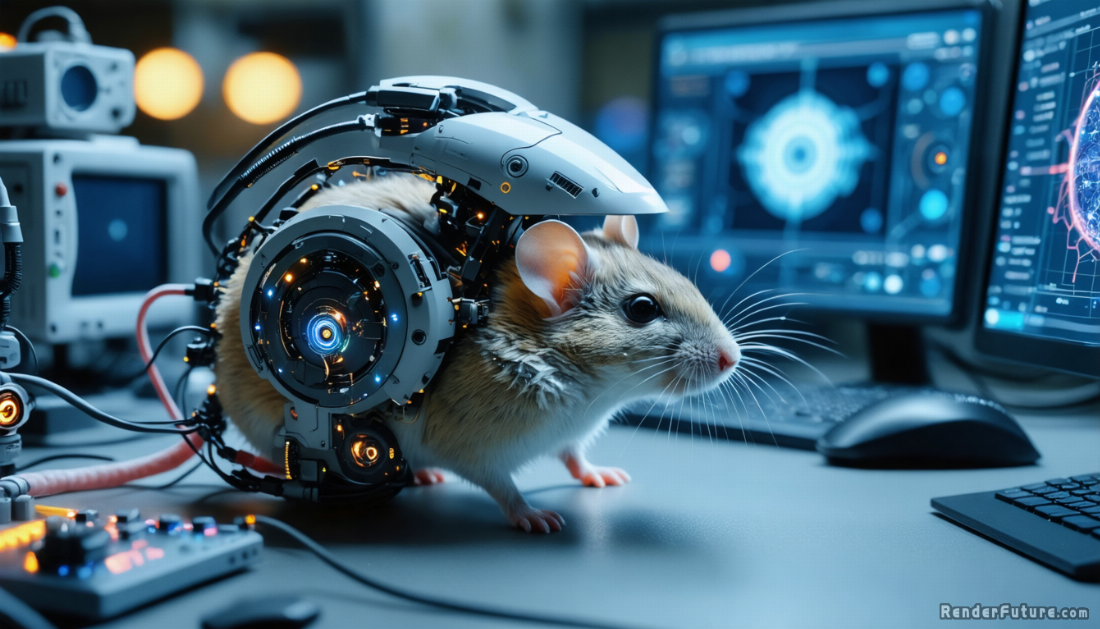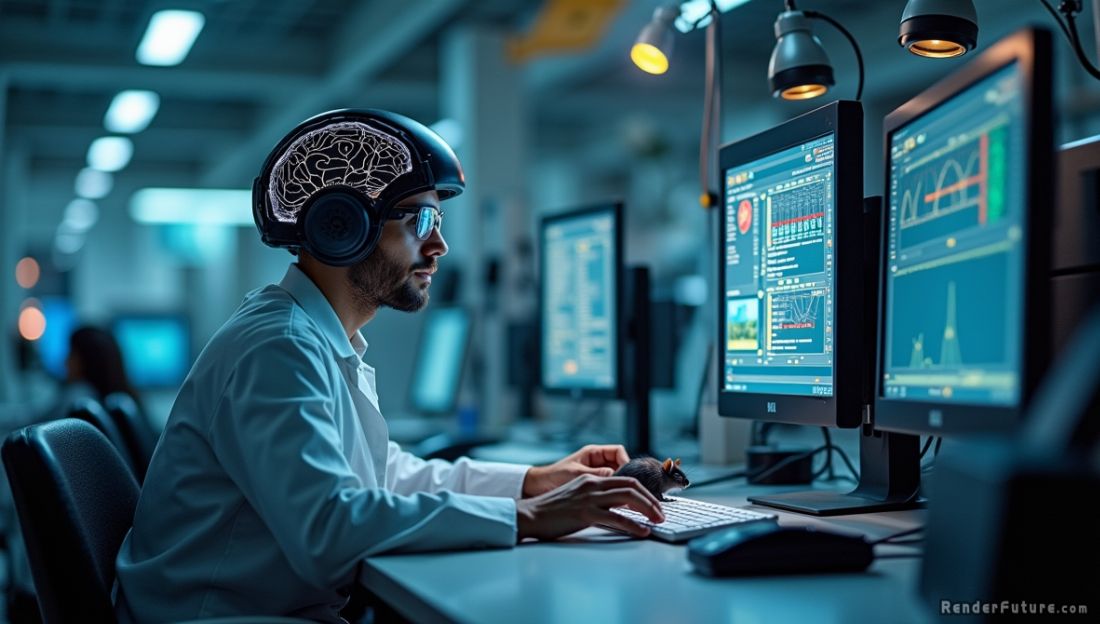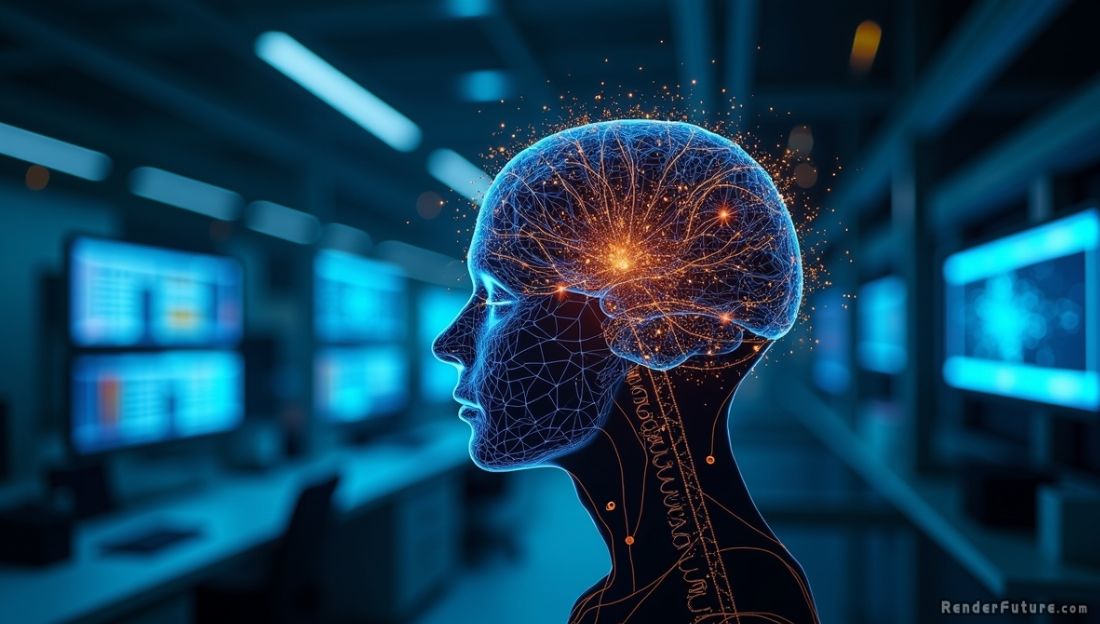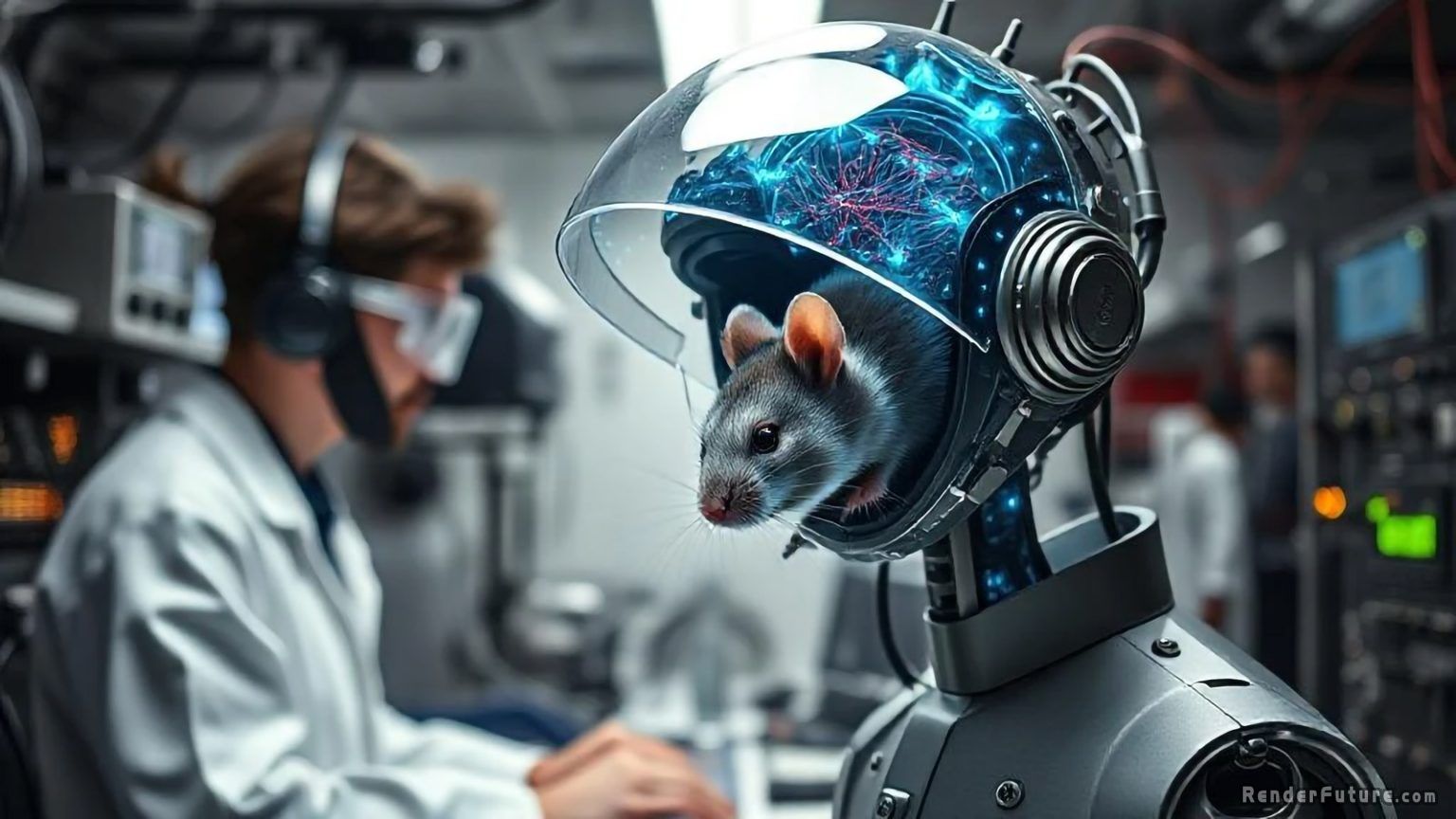Stunning Mouse Brain Map Could Revolutionize Neuroscience
 Imagine holding a speck of brain tissue no larger than a grain of sand. Now imagine that inside that tiny fragment, there are 84,000 neurons and 524 million connections weaving an intricate web of communication. That’s exactly what a team of neuroscientists has achieved—creating the most detailed wiring diagram of a mammalian brain ever produced.
Imagine holding a speck of brain tissue no larger than a grain of sand. Now imagine that inside that tiny fragment, there are 84,000 neurons and 524 million connections weaving an intricate web of communication. That’s exactly what a team of neuroscientists has achieved—creating the most detailed wiring diagram of a mammalian brain ever produced.
This groundbreaking research, published in Nature, doesn’t just offer a glimpse into how a mouse’s brain processes vision—it could revolutionize our understanding of human cognition, neurological disorders, and even artificial intelligence. The implications are staggering: if we can decode the brain’s circuitry, we may unlock treatments for diseases like Alzheimer’s, design brain-like AI, and perhaps even answer age-old questions about consciousness itself.
The Brain’s Hidden Labyrinth
The study focused on the primary visual cortex, the part of the brain responsible for the first stages of interpreting what we see. Using cutting-edge imaging, genetic engineering, and AI, researchers reconstructed a cubic millimeter of brain tissue—a seemingly minuscule volume that contains an almost unfathomable complexity.
 But why start with vision?
But why start with vision?
The visual cortex is one of the most well-studied brain regions, making it an ideal testing ground for mapping techniques. By understanding how neurons process something as concrete as visual data, scientists can extrapolate to more abstract functions like memory and decision-making. What they found was a level of organization that defies simple explanation—a tightly choreographed dance of electrical impulses and chemical signals.
- 200,000+ cells (including 84,000 neurons)
- 524 million synaptic connections
- 3.4 miles (5.4 km) of neural wiring packed into a space smaller than a poppy seed
“This isn’t just a map—it’s a Rosetta Stone for neuroscience,” says Forrest Collman, a neuroscientist at the Allen Institute for Brain Science. “We’re seeing how structure and function intertwine in ways we never fully grasped before.” The team discovered that neurons don’t just fire randomly; they follow precise patterns, almost like an orchestra where each musician knows exactly when to play.
How Did They Do It?
The process was nothing short of a technological marvel:
- Recording Brain Activity – Mice were shown clips from The Matrix (yes, really) while running on a treadmill. Their neurons were genetically modified to glow when active.
- 3D Reconstruction – The Allen Institute sliced the brain tissue into ultra-thin sections, imaging each layer.
- AI-Powered Mapping – Princeton researchers used machine learning to trace every neuron and synapse, reconstructing the brain’s wiring in digital form.
The result? A Google Maps for the brain, where scientists can zoom in on individual neurons and follow their connections like highways in a vast neural city. But this wasn’t just a passive observation—by correlating neural activity with visual stimuli, the team could see how the brain processes information in real time.

What’s even more astonishing is the sheer scale of data involved. A single cubic millimeter of brain tissue generated petabytes of imaging data, requiring supercomputers to process. “We’re talking about a level of detail that was unimaginable a decade ago,” says one researcher.
Why Does This Matter?
1. Decoding Neurological Disorders
Many brain disorders—autism, schizophrenia, epilepsy—may stem from miswired connections. This research could help pinpoint where things go wrong.
- Inhibitory neurons, which act like “brakes” on brain activity, were found to be far more specialized than expected.
- Faulty inhibition could lead to seizures or sensory overload, common in autism.
But the real breakthrough is in the details. The team discovered that inhibitory neurons don’t just blanket the brain with suppression—they target specific excitatory neurons with surgical precision. This suggests that disorders like epilepsy, where neural activity spirals out of control, might be due to a failure in these finely tuned inhibitory circuits.
The next step? Using this map to test how drugs or genetic therapies could restore normal connectivity. “If we can fix the wiring, we might be able to treat conditions that were once thought untouchable,” says one scientist involved in the study.

2. The Future of AI
The brain is still the most efficient “computer” in existence. By reverse-engineering its wiring, we could design smarter, more efficient AI.
- Current neural networks are crude compared to biological brains.
- Mimicking real neural circuits could lead to AI that learns faster and uses less energy.
But here’s the catch: today’s AI relies on brute-force computation, while the brain achieves more with less. By studying how real neurons communicate—especially the balance between excitation and inhibition—researchers hope to build AI that doesn’t just mimic intelligence but understands it.
Imagine an AI that can learn a new language after hearing a few sentences, or a robot that adapts to unexpected obstacles in real time. That’s the promise of brain-inspired computing. “We’re not just copying the brain—we’re learning its secrets,” says an AI researcher collaborating on the project.
3. A Step Toward Uploading Consciousness?
 Science fiction? Maybe. But if we can map a mouse’s brain today, could we one day digitize a human mind?
Science fiction? Maybe. But if we can map a mouse’s brain today, could we one day digitize a human mind?
- Projects like MICrONS (Machine Intelligence from Cortical Networks) are already bridging neuroscience and AI.
- A full human brain map is still decades away, but this is a crucial first step.
The idea of “mind uploading” has long been the stuff of sci-fi, but this research brings it closer to reality. If we can replicate a brain’s wiring in silicon, could we preserve a person’s thoughts, memories, and even identity? Some futurists believe so, though ethical and philosophical debates rage on.
For now, the focus is on more immediate applications, like brain-computer interfaces that could help paralyzed patients communicate. But the long-term possibilities are mind-bending. “We’re not there yet,” cautions one scientist, “but we’re laying the groundwork.”
Challenges and the Road Ahead
While this is a monumental achievement, the brain’s complexity is staggering.
- A mouse’s brain is 1,000 times smaller than a human’s. Scaling up will require breakthroughs in computing power.
- Synapses aren’t just on/off switches—they communicate via chemicals, adding another layer of complexity.
Possible solutions?
✔ Quantum computing could handle the data deluge.
✔ Collaborative open-science initiatives (like MICrONS) will accelerate progress.
But the biggest hurdle isn’t just technical—it’s conceptual. The brain doesn’t work like a machine with replaceable parts. Every neuron is unique, and its behavior depends on context. “We’re dealing with a system that’s both incredibly precise and maddeningly flexible,” says one researcher.
Still, the progress is undeniable. Just a few years ago, mapping even a thousand neurons was a Herculean task. Now, scientists are talking about scaling up to entire brains. “The pace is accelerating,” says Collman. “What seemed impossible yesterday is within reach today.”
A New Era of Brain Science
 This research doesn’t just answer questions—it raises new ones. How do thoughts emerge from these connections? Can we repair broken circuits? Could we one day “back up” our memories like computer files?
This research doesn’t just answer questions—it raises new ones. How do thoughts emerge from these connections? Can we repair broken circuits? Could we one day “back up” our memories like computer files?
For now, the team remains grounded but optimistic. “We’re just scratching the surface,” says Andreas Tolias of Baylor College of Medicine. “But every connection we map brings us closer to unlocking the brain’s deepest secrets.”
One thing is certain: the age of precision brain mapping has arrived. And with it comes the promise of cures for incurable diseases, AI that rivals human intelligence, and perhaps even a deeper understanding of what makes us who we are.

References and Sources
-
Nature – “A connectomic study of a mouse’s visual cortex”
The original study detailing the neural mapping breakthrough.
https://www.nature.com/articles/s41586-024-07354-8 -
Allen Institute for Brain Science – “Mapping the Brain’s Wiring”
An in-depth look at the imaging techniques used in the study.
https://alleninstitute.org/brain-science -
Baylor College of Medicine – “Neural Activity and Connectivity”
Explains how brain function was recorded alongside structural mapping.
https://www.bcm.edu/research/neuroscience










